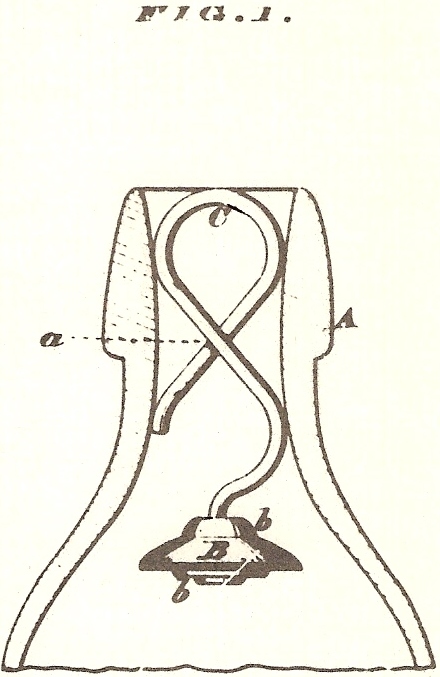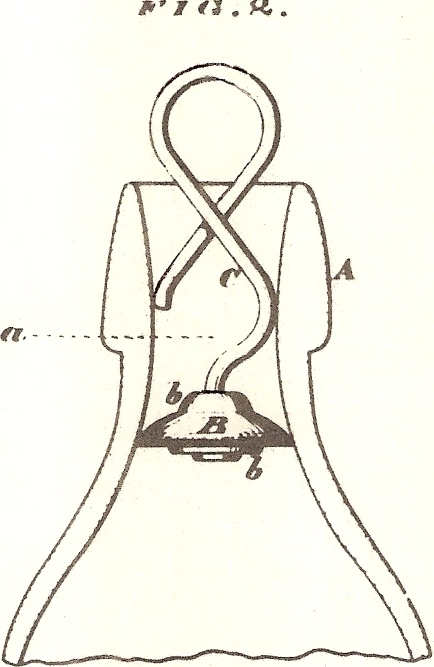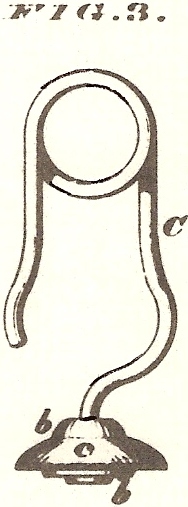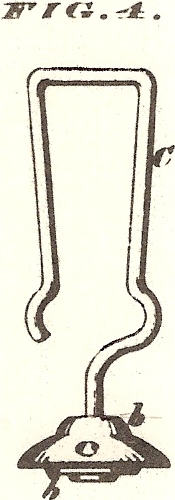Amos F. Parkhurst Bottle Stopper




Amos F. Parkhurst’s patent
application (filed August 17, 1881 and subsequently assigned to Edward
H. Everett of
I, Amos F. Parkhurst…residing at Kewanee…Illinois,
have invented certain new and useful Improvements in
Bottle-Stoppers…(relating to) that class of bottle-stoppers known as
“internal suspended stoppers,” wherein the valve or stopper proper
closes upward, and is operated by a bail or handle projecting up in the
neck of the bottle.
The novelty consists in the combination, with the neck
of a bottle having a slightly contracted throat at or near its middle
lengthwise, of an internal stopper-plug having a looped wire bail
rigidly fastened by one end to the plug or valve, and having the other
end free, whereby the bail becomes a spring to hold the plug or valve in
either its closed or open position…
In the accompanying drawings, Figure 1 is a vertical
central section of the upper part or neck of a bottle provided with my
improved stopper, showing the valve open.
Fig. 2 is a corresponding view, showing the valve closed.
Figs. 3 and 4 are modifications in the spring-bail.
A represents the
neck of a bottle whose throat is slightly contracted at or near the
point of the dotted line a.
The valve or plug B, I prefer to make of the two integral or separate disks
b, with an intermediate
projecting rubber disk, as is common in this class of stoppers.
Extending up from the valve
B, and rigidly secured thereto
by one end, is the spring-bail C, which may be of either of the forms shown in Figs. 1, 2, 3, and
4. This bail is formed of
wire so bent and doubled back in the neck of the bottle that its upper
end forms a grasping-loop for drawing the stopper up to its seat, while
its free end serves as a spring, which, acting against the throat of the
neck, in connection with that part of the outward bend of the bail just
above its point of connection and opposite said free end, serves to hold
the valve in either its open or closed position, as shown in Figs. 1 and
2. The spring is
sufficiently yielding to pass through the contracted part of the throat
of the neck, while the upper bend forming the grasping loop is
sufficiently large to prevent the stopper falling entirely into the
bottle.
In Figs. 1 and 2 I have shown the bail bent in
substantially the form of a figure 8; but the forms shown in Figs. 3 and
4 serve the same purpose, and I consider them as equivalents.
The advantage of having a stopper which can be held
either open or closed, as above, is that it can be used with still
liquids as well as gaseous or aerated liquids, and when the bottle is
tilted to pour out the contents there is no liability of the stopper
accidentally reseating itself.
I do not limit myself to the shape of the bail, nor to
a bottle with a contracted portion in its throat or neck, for a spring
bail properly fitted into a straight neck would serve to suspend the
stopper adjustably by the frictional contacted caused by the spring in
the bail. I do, however,
limit myself here to a bail attached rigidly to the stopper by one end
only and with the other end free.
Comments:
This is the infamous patent that generated a major
lawsuit (and countersuit) between Charles G. Hutchinson and Edward H.
Everett. Rather than
duplicating information about the lawsuit and its outcome here, navigate to
the “Hutchinson's Lawsuits” pages in the
Industry History section for full details.
 HutchBook.com
HutchBook.com